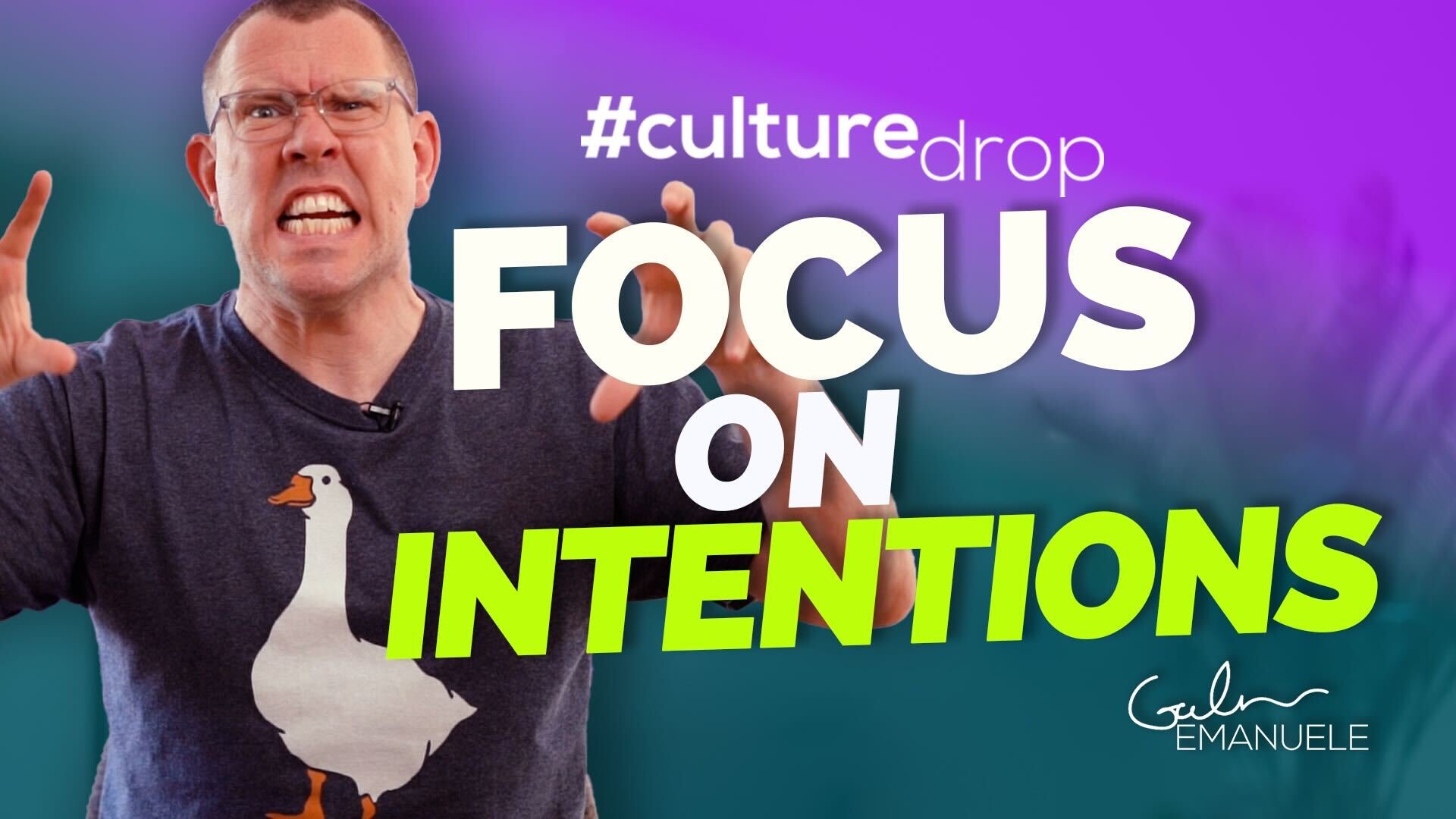Navigating Conflict in a Better Way
Welcome to the #culturedrop. Every Tuesday, Galen Emanuele emails tools to advance leadership skills, team culture, and personal growth. No spam, just great content. Sign up now to get it in your inbox.
Navigating conflict using intentions: a healthier way to resolution.
Conflict — sticky, emotionally charged situations that can make or break relationships and really do a number on workplace dynamics. Whether it’s with a friend, romantic partner, or work colleagues, we’ve all experienced that overwhelming flood of emotion or sense of frustration when a disagreement escalates. We’ve also experienced when conflict doesn’t go or end well, which often creates major damage and fallout.
The bright side is that conflict doesn’t have to be destructive. This week I’m diving into a tool that can help you navigate conflict in a healthier, more productive way: intentions.
“Strong emotions being in the mix can make us quick to react, quick to defend, and sharp with our words.”
Why conflict escalates.
Conflict becomes immediately unproductive when emotions take the driver’s seat, often leaving logic and empathy behind. Strong emotions being in the mix can make us quick to react, quick to defend, and sharp with our words.
Big emotions in play can make it easy to escalate a situation from zero to a hundred causing words to get tangled, feelings hurt, and instead of resolving anything, we dig our heels deeper into our positions and create bigger divides or damaged relationships.
A root issue of that often lies in our inability to identify or clearly communicate what we really want — our intentions.
The power of using intentions in conflict.
“When conflict arises, focusing on intentions helps us shift away from the emotional chaos of opinions and reactions.”
When conflict arises, focusing on intentions helps us shift away from the emotional chaos of opinions and reactions. Instead, it brings clarity, more productive language, and understanding to the conversation.
Here’s why this works:
Intentions ground the conversation
By clearly stating what you’re trying to achieve, you remind everyone involved — yourself included — of the desired end goal.Intentions de-escalate emotions
Conflict burns hotter and thrives on emotional escalation. By articulating intentions, you steer the dialogue toward resolution rather than winning or retaliation.Intentions foster understanding
Sharing your intentions invites the other person to do the same, creating a foundation for mutual understanding and both people feeling listened to.
What this looks like in practice.
Some concrete examples:
1. Identify Your Own Intentions
Before engaging, ask yourself:
What do I really want to achieve here?
How do I want the other person to feel by the end of this?
For instance, you might realize, My intention is to feel listened to and understood.
2. Communicate Your Intentions Clearly
In the middle of a heated conversation, redirect the conversation to focus on positive outcomes and to clarify intentions. You might say something like:
“My intention here is to make you feel heard and respected. I’m not trying to insult you or make you feel bad.”
“I want us to find a resolution that feels good for both of us.”
3. Ask About Their Intentions
If the conflict feels stuck, gently probe:
“What are you hoping to achieve here?”
“Do you want me to understand something specific or acknowledge how you’re feeling?”
This not only redirects the conversation but also signals that you value their perspective.
4. Set Boundaries with Intentions
It’s okay to establish and advocate for your needs:
“My intention is to feel listened to. An example of what that looks like is you letting me finish without interrupting.”
“I’d like for us to take turns sharing our thoughts so we can both feel heard.”
“We may be in conflict now, but our ultimate goal is to move through this productively and find resolution together.”
Intentions as a “North Star”
Focusing on intentions gives you and the other person a shared “North Star.” It’s a way of saying, We may be in conflict now, but our ultimate goal is to move through this productively and find resolution together.
Imagine starting a difficult conversation with:
“I want to acknowledge that this feels hard for both of us, but my intention here is to find a way to move through this and forward together.”
That simple statement sets the tone for a more productive and empathetic exchange.
“By grounding our conversations in intentions, we replace emotional volatility and static with clarity and purpose.”
Intentions are a powerful currency.
Conflict is inevitable, and how we move through it and respond to it is a choice. By grounding our conversations in intentions, we replace emotional volatility and static with clarity and purpose.
The next time you’re facing a heated moment, take a step back, breathe, and redirect escalating or negative emotions towards language focused on clarifying and advocating for what you and the other person really want as an outcome.
Related Blogs:
How to Have a Difficult or Sensitive Conversation
Want more?
This article was created by Galen Emanuele for the #culturedrop. Free leadership and team culture content in less than 5 minutes a week. Check out the rest of this month's content and subscribe to the Culture Drop at https://bit.ly/culturedrop








